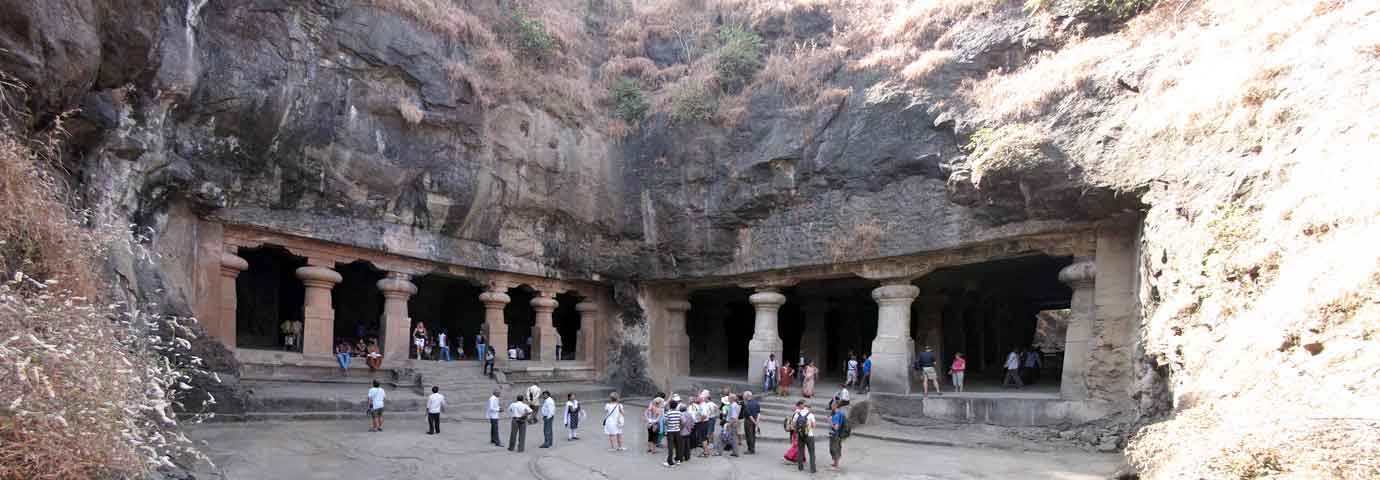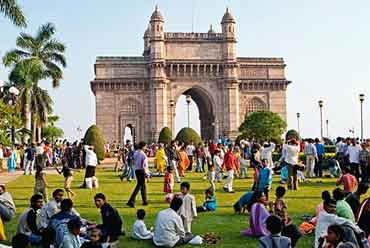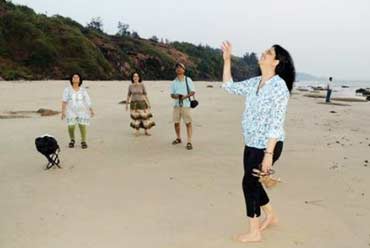The Elephanta Caves are a site of ancient cave temples on Elephanta Island, off the shore of Mumbai. From the city of Dreams it is a one hour ferry ride away as the island lies in the middle of Arabian Sea. The mystical caves were listed in UNESCO World Heritage Sites since 1987. The caves are full of Hindu rock art and the Buddhist rock Art. Lord Shiva is seen worshipped in the form of engraved art. There are various majestic figurines and carvings dedicated to the Hindu Lord as well as the pantheon form mythology. Various tales have been narrated through the sculptures in the caves. It is one of India’s most prized sites.
History
Not much is known about the origin of the Elephant caves. The island was previously known as Gharapuri. It was renamed as Elephanta by Portuguese, as they saw a statue of an elephant on the island they named the islands. Shaivism, the worship of Shiva, inspired the building of these temples. Archaeologists believe that they date back to the 7th century. It is still unclear as to which dynasty ruled when the caves were being built. However, historians are of the opinion that Chalukya Dynasty ruler, Pulkesin II, built the Shiva shrine. The enormity of the project and the great craftsmanship has led historians to conclude that only a powerful kingdom could have built such enormous architectural marvel. Only great artisans had the knowledge and the skill to carve such sculptures out of solid rock.
Desecrated by Portuguese colonials as well as modern visitors, a lot of damage has been done to these heritage monuments. The Archaeological Survey of India (ASI) is now responsible for the upkeep of these caves and their treasures.
What to see
There are seven cave excavations in the Elephanta group. Every carving, sculpture and engraved art is absolutely enthralling. Things you should not definitely miss are:
An enormous Mahesamurti, is the greatest allure. At 18 ft., the remarkable sculpture depicts Shiva in his three-headed form as Creator (facing right), Protector (the crowned face at the center), and Destroyer (facing left, with serpents for hair).
A figure of Ardhanarisvara, a form of Siva with the combined energies of male and female. The carving is finely done and the elegance shines through.
One figure shows Shiva bringing the Ganges River down to earth letting it trickle through his matted hair.
Another depiction is as Yogisvara, Lord of Yogis seated on a lotus and as Shiva Nataraja, the many armed cosmic dancer.
Shiva portrayed in the Shivalingam form in the colossal image is worth visiting.
Other sculptures near the doorways and on side panels celebrate Shiva's accomplishments. Trimurti, Shivalingam, Kalyansundara, Gangadhara, Uma maheswara and Ardhanarisara sculptures, which are all the forms of Lord Shiva are finely sculpted in various areas of the caves.
On the Stupa Hill, there are a small group of caves that have Buddhist images. Images of Gautam Buddha and Jaataka tales abound.
Elephant Caves are also the backdrop of a classical dance festival organized every February. The historic background, the cultural program creates a delightful experience.
Elephant Caves are located in Elephanta Island off the shore of Mumbai. To reach the caves, one has to reach Mumbai first. From the Apollo Harbour regular ferries reach the island housing the heritage sites.






